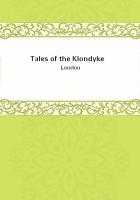Dibdin mentions in "Bibliomania" (London, 1811), p. 90, that a M.
Van Praet was compiling a catalogue of works printed on vellum, and had collected more than 2000 articles. When hard things are said about Henry VIII., let us remember that this monarch had a few copies of his book against Luther printed on vellum. The Duke of Marlborough's library possessed twenty-five books on vellum, all printed before 1496. The chapter-house at Padua has a "Catullus" of 1472 on vellum; let Mr. Robinson Ellis think wistfully of that treasure. The notable Count M'Carthy of Toulouse had a wonderful library of books in membranis, including a book much coveted for its rarity, oddity, and the beauty of its illustrations, the "Hypnerotomachia" of Poliphilus (Venice, 1499). Vellum was the favourite "vanity" of Junot, Napoleon's general. For reasons connected with its manufacture, and best not inquired into, the Italian vellum enjoyed the greatest reputation for smooth and silky whiteness. Dibdin calls "our modern books on vellum little short of downright wretched." But the editor of this series could, I think, show examples that would have made Dibdin change his opinion.
Many comparatively expensive papers, large in format, are used in choice editions of books. Whatman papers, Dutch papers, Chinese papers, and even papier verge, have all their admirers. The ******* will soon learn to distinguish these materials. As to books printed on coloured paper--green, blue, yellow, rhubarb-coloured, and the like, they are an offence to the eyes and to the taste. Yet even these have their admirers and collectors, and the great Aldus himself occasionally used azure paper. Under the head of "large paper," perhaps "uncut copies" should be mentioned. Most owners of books have had the edges of the volumes gilded or marbled by the binders. Thus part of the margin is lost, an offence to the eye of the bibliomaniac, while copies untouched by the binder's shears are rare, and therefore prized. The inconvenience of uncut copies is, that one cannot easily turn over the leaves. But, in the present state of the fashion, a really rare uncut Elzevir may be worth hundreds of pounds, while a cropped example scarcely fetches as many shillings. A set of Shakespeare's quartoes, uncut, would be worth more than a respectable landed estate in Connemara. For these reasons the ******* will do well to have new books of price bound "uncut." It is always easy to have the leaves pared away; but not even the fabled fountain at Argos, in which Hera yearly renewed her maidenhood, could restore margins once clipped away. So much for books which are chiefly precious for the quantity and quality of the material on which they are printed. Even this rather foolish weakness of the ******* would not be useless if it made our publishers more careful to employ a sound clean hand-made paper, instead of drugged trash, for their more valuable new productions.
Indeed, a taste for hand-made paper is coming in, and is part of the revolt against the passion for everything machine-made, which ruined art and handiwork in the years between 1840 and 1870.
The third of M. Brunet's categories of books of prose, includes livres de luxe, and illustrated literature. Every Christmas brings us livres de luxe in plenty, books which are no books, but have gilt and magenta covers, and great staring illustrations. These are regarded as drawing-room ornaments by people who never read. It is scarcely necessary to warn the collector against these gaudy baits of unregulated Christmas generosity. All ages have not produced quite such garish livres de luxe as ours. But, on the whole, a book brought out merely for the sake of display, is generally a book ill "got up," and not worth reading. Moreover, it is generally a folio, or quarto, so large that he who tries to read it must support it on a kind of scaffolding. In the class of illustrated books two sorts are at present most in demand. The ancient woodcuts and engravings, often the work of artists like Holbein and Durer, can never lose their interest. Among old illustrated books, the most famous, and one of the rarest, is the "Hypnerotomachia Poliphili," "wherein all human matters are proved to be no more than a dream." This is an allegorical romance, published in 1499, for Francesco Colonna, by Aldus Manucius. Poliam Frater Franciscus Columna peramavit.
"Brother Francesco Colonna dearly loved Polia," is the inion and device of this romance. Poor Francesco, of the order of preachers, disguised in this strange work his passion for a lady of uncertain name. Here is a translation of the passage in which the lady describes the beginning of his affection. "I was standing, as is the manner of women young and fair, at the window, or rather on the balcony, of my palace. My yellow hair, the charm of maidens, was floating round my shining shoulders. My locks were steeped in unguents that made them glitter like threads of gold, and they were slowly drying in the rays of the burning sun. A handmaid, happy in her task, was drawing a comb through my tresses, and surely these of Andromeda seemed not more lovely to Perseus, nor to Lucius the locks of Photis. {6}({6} In the Golden Ass of Apuleius, which Polia should not have read.) On a sudden, Poliphilus beheld me, and could not withdraw from me his glances of fire, and even in that moment a ray of the sun of love was kindled in his heart."The fragment is itself a picture from the world of the Renaissance.














